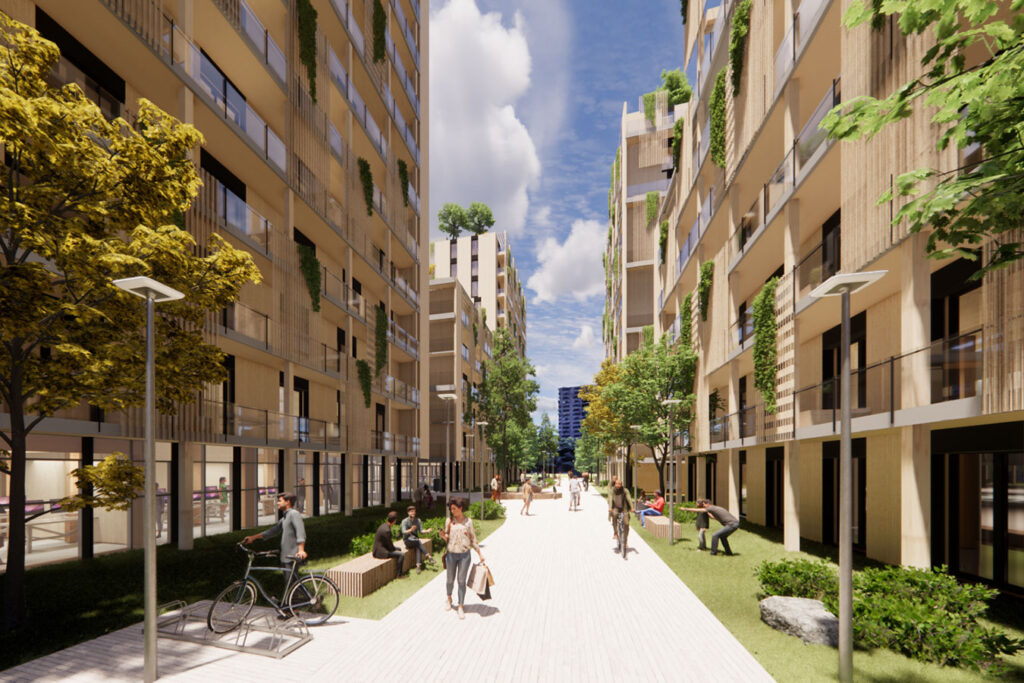
Affordable Housing for Urban Poor: Solutions for the Future
The challenge of providing affordable housing for the urban poor is not new, yet it remains a critical issue in today’s rapidly urbanizing world. As cities expand, the demand for housing grows, often outstripping supply, and leaving the urban poor struggling to find adequate shelter. This article delves into the various strategies and solutions that can pave the way for more inclusive urban development.
With the global population increasingly migrating towards urban areas, the pressure on housing markets has intensified. The need for affordable housing has never been more urgent. This article will explore the core challenges and innovative solutions that aim to address this pressing issue.

Understanding the Housing Crisis
The urban housing crisis is a multifaceted problem, influenced by economic, social, and political factors. Rising property prices, inadequate urban planning, and insufficient government policies contribute significantly to the housing shortage faced by the urban poor.
Economic Barriers
One of the primary barriers to affordable housing is the economic disparity between different social classes. The high cost of land and construction materials makes it difficult for developers to build low-cost housing, further marginalizing the urban poor.
Government Policies
Government policies play a crucial role in shaping the housing landscape. In many regions, lack of effective policies and regulations can hinder the development of affordable housing projects. For more insights on how regulations impact housing, visit Housing Sharing Economy Regulations.
Innovative Solutions for Affordable Housing
Despite these challenges, there are numerous innovative solutions that can help bridge the gap between demand and supply of affordable housing for the urban poor.
Micro-Housing Units
Micro-housing units are a viable solution for providing affordable living spaces in densely populated urban areas. These compact units are designed to maximize space efficiency and reduce costs. For creative design ideas, you might explore Innovative Housing Designs.
Co-Living Spaces
Co-living spaces offer a modern take on communal living, where residents share common areas and amenities. This model not only reduces living expenses but also fosters a sense of community. To learn more about co-living solutions, check out Affordable Co-Living Solutions.
Public-Private Partnerships
Collaborations between government bodies and private developers can result in the successful implementation of affordable housing projects. These partnerships leverage resources and expertise from both sectors to create sustainable housing solutions.
The Role of Technology in Housing
Technology is reshaping the way we approach affordable housing. From digital platforms that connect renters with landlords to innovative construction methods, technology offers numerous opportunities to make housing more accessible.
3D Printing
3D printing technology is revolutionizing the construction industry by offering a cost-effective and efficient way to build homes. This technology can significantly reduce construction time and costs, making it an attractive option for affordable housing projects.
Smart Housing Solutions
Smart housing solutions integrate technology into homes to enhance energy efficiency and reduce utility costs. These solutions not only make housing more affordable but also contribute to a sustainable living environment.
Sustainable Urban Development
Sustainable urban development is essential for creating livable cities that provide affordable housing options. This involves planning and building cities in a way that meets the needs of the present without compromising the future.
Green Building Practices
Adopting green building practices can significantly reduce the environmental impact of housing developments and promote sustainability. These practices include using eco-friendly materials, enhancing energy efficiency, and minimizing waste.
Community Engagement
Community engagement is vital for the success of any housing initiative. By involving local communities in the planning and implementation process, developers can ensure that the housing solutions meet the specific needs of the residents.
Conclusion: Moving Forward
The path to providing affordable housing for the urban poor is fraught with challenges, but it is also filled with opportunities for innovation and growth. By leveraging technology, fostering public-private partnerships, and embracing sustainable practices, we can create a future where everyone has access to safe and affordable housing.
For further exploration of sustainable housing solutions, visit Sustainable Urban Housing Solutions.

FAQs
What are micro-housing units?
Micro-housing units are small, efficient living spaces designed to maximize functionality and minimize costs. They are ideal for urban areas with limited space.
How do co-living spaces work?
Co-living spaces involve shared living arrangements where residents have private bedrooms but share common areas like kitchens and living rooms. This model helps reduce costs and fosters community.
What role does technology play in affordable housing?
Technology plays a significant role by providing innovative construction methods, digital platforms for housing access, and smart home solutions that reduce living costs.
This article contains affiliate links. We may earn a commission at no extra cost to you.